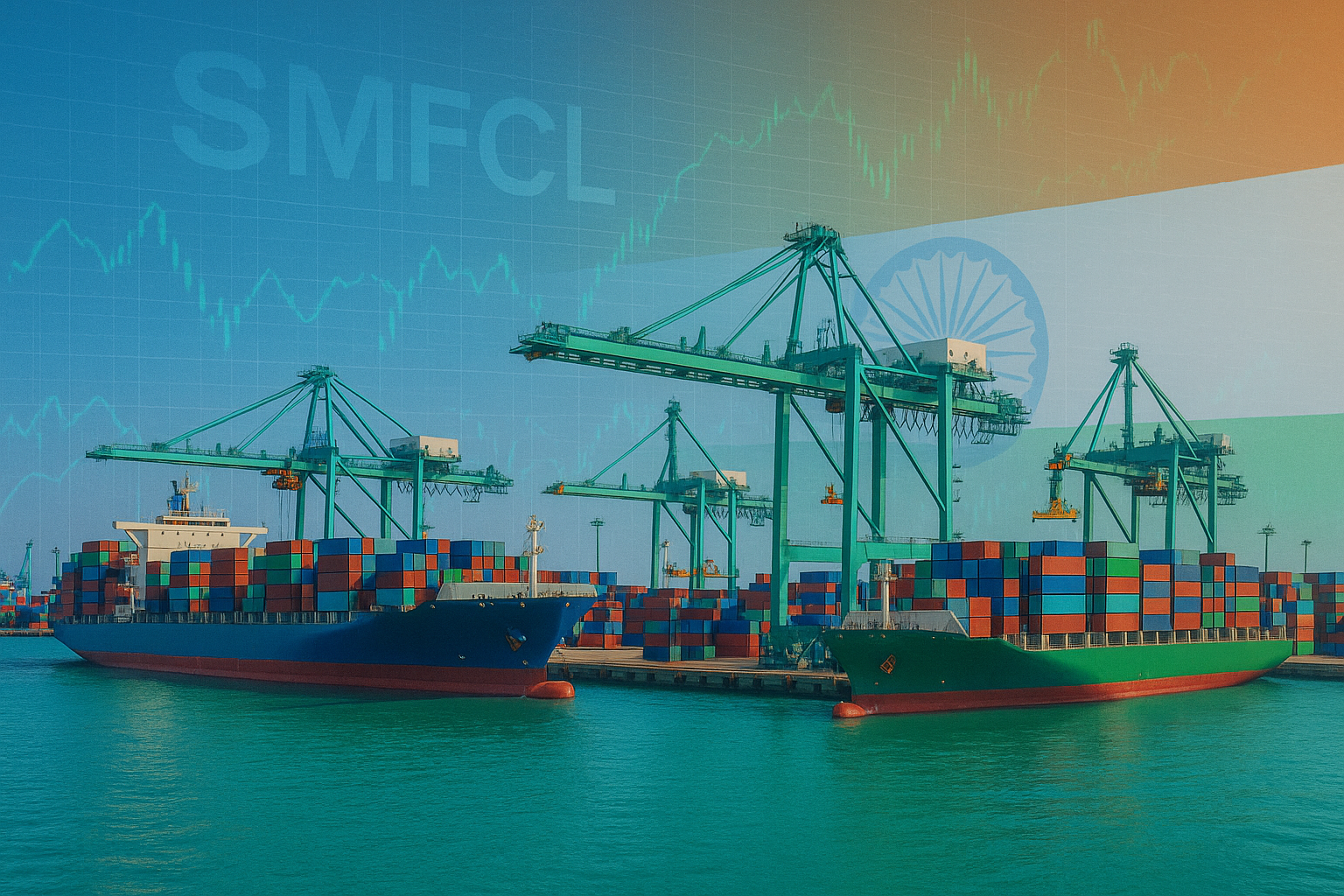On June 26, 2025, Union Minister of Ports, Shipping, and Waterways, Sarbananda Sonowal, inaugurated the Sagarmala Finance Corporation Limited (SMFCL), marking a historic milestone as India’s first Non-Banking Financial Company (NBFC) dedicated to the maritime sector. The launch, held in New Delhi, was attended by Union Minister of State for MoPSW, Shantanu Thakur, and MoPSW Secretary TK Ramachandran, underscoring the government’s commitment to transforming India’s maritime infrastructure. Formerly the Sagarmala Development Company Limited, SMFCL’s registration as an NBFC with the Reserve Bank of India (RBI) on June 19, 2025, positions it to bridge critical financing gaps and drive sustainable growth in alignment with the Maritime Amrit Kaal Vision 2047. This article delves into SMFCL’s transformative potential, its financial offerings, and its implications for India’s maritime ambitions.
SMFCL: A Game-Changer for Maritime Financing
The establishment of SMFCL as a Mini Ratna, Category-I Central Public Sector Enterprise marks a pivotal step in addressing the maritime sector’s long-standing need for specialized financial solutions. Unlike traditional NBFCs, SMFCL is tailored to meet the unique demands of maritime stakeholders, including port authorities, shipping companies, micro, small, and medium enterprises (MSMEs), startups, and maritime educational institutions. Its mandate includes providing short, medium, and long-term funding to support projects in shipbuilding, renewable energy, cruise tourism, and maritime education.
Union Minister Sarbananda Sonowal emphasized SMFCL’s significance, stating, “The registration of Sagarmala Finance Corporation Limited as an NBFC is a major milestone in India’s maritime journey. Under the visionary leadership of Prime Minister Narendra Modi, we are taking decisive steps to strengthen the maritime sector as a key pillar of our economy”. Shantanu Thakur added, “SMFCL will create a focused financial ecosystem to accelerate maritime growth, unlocking opportunities for innovation, investment, and inclusive development”.
The maritime sector contributes approximately 95% of India’s trade by volume and 65% by value, according to the Ministry of Ports, Shipping, and Waterways. However, financing constraints have historically limited infrastructure development. SMFCL aims to address this by offering tailored financial products, such as project loans, equipment financing, and working capital support, to catalyze growth.
Strategic Alignment with Maritime Amrit Kaal Vision 2047
SMFCL’s launch aligns with the Maritime Amrit Kaal Vision 2047, a roadmap to position India as a global maritime leader by enhancing port capacity, modernizing shipping, and promoting sustainable practices. The vision targets increasing India’s port handling capacity to 3,000 million metric tonnes per annum (MMTPA) by 2047, from 1,617 MMTPA in 2024, as per MoPSW data. SMFCL’s role in financing infrastructure projects, such as port modernization, coastal shipping, and inland waterways, is expected to drive this ambitious goal.
The corporation will also support emerging sectors like green shipping and cruise tourism. For instance, India’s cruise tourism market, valued at $270 million in 2024, is projected to grow at a CAGR of 14.5% through 2030, per industry reports. SMFCL’s funding for cruise terminal development and sustainable shipbuilding could accelerate this growth, creating jobs and boosting coastal economies.
Industry Leader Perspectives
Industry leaders have hailed SMFCL’s launch as a transformative step. Vikas Jain, Director at Indian Ports Association, commented, “SMFCL fills a critical gap in maritime financing. Its sector-specific focus will empower MSMEs and startups, fostering innovation in shipbuilding and logistics.” Anil Devli, CEO of the Indian National Shipowners’ Association, noted, “The maritime sector has long needed dedicated financing. SMFCL’s ability to offer flexible funding will enhance India’s competitiveness in global trade.”
However, some experts urge caution. Rajesh Gupta, a financial analyst at Deloitte India, said, “While SMFCL’s launch is promising, its success depends on robust risk management and alignment with RBI regulations. The maritime sector’s capital-intensive nature requires careful project evaluation.” Neeraj Bansal, Partner at KPMG India, added, “SMFCL must prioritize sustainable projects to align with global ESG standards, ensuring long-term viability.”
Social Media Reactions from Industry Leaders
The launch has generated significant buzz on X, with industry leaders sharing their views:
@MaritimeIndia: “SMFCL’s launch is a landmark for India’s maritime sector! Dedicated financing will drive innovation and growth. #Sagarmala #NBFC”
@InfraExpertIN: “Kudos to @sarbanandsonwal for launching India’s first maritime NBFC. SMFCL will unlock new opportunities for ports and shipping. #MaritimeVision2047”
@FinSectorWatch: “Sagarmala Finance as an NBFC is a bold move. Let’s see how it balances growth with financial discipline. #SMFCL #Maritime”
Economic and Policy Implications
SMFCL’s establishment comes at a time when India’s maritime sector is poised for growth. The country’s 7,500-km coastline and 12 major ports handle over 1.4 billion tonnes of cargo annually, yet financing challenges have constrained expansion. SMFCL’s entry as an NBFC could mobilize private investment, with the potential to attract ₹2.5 lakh crore in maritime infrastructure funding by 2030, per industry estimates.
The initiative also aligns with RBI’s push for sector-specific NBFCs to support niche industries. SMFCL’s Mini Ratna status grants it operational flexibility, enabling faster decision-making compared to traditional public sector entities. However, challenges remain, including competition from established NBFCs and the need to build trust among maritime stakeholders unfamiliar with specialized financing.
Future Outlook
SMFCL’s success will hinge on its ability to deliver accessible, cost-effective financing while maintaining financial discipline. The corporation plans to launch its first set of financial products by Q3 FY26, targeting port modernization and green shipping projects. Collaborations with global financial institutions and development banks could further enhance its capacity to fund large-scale initiatives.
As India aims to become a $30-trillion economy by 2047, SMFCL’s role in strengthening the maritime sector will be crucial. By fostering innovation, supporting MSMEs, and promoting sustainable practices, the NBFC is set to play a pivotal role in realizing India’s vision of becoming a global maritime powerhouse.
Conclusion
The inauguration of Sagarmala Finance Corporation Limited as India’s first maritime NBFC is a bold step toward unlocking the potential of the country’s maritime sector. By addressing financing gaps and offering tailored solutions, SMFCL is poised to drive sustainable growth, innovation, and economic development. As it embarks on this transformative journey, the corporation’s success will depend on strategic execution, stakeholder collaboration, and alignment with India’s long-term maritime goals.












